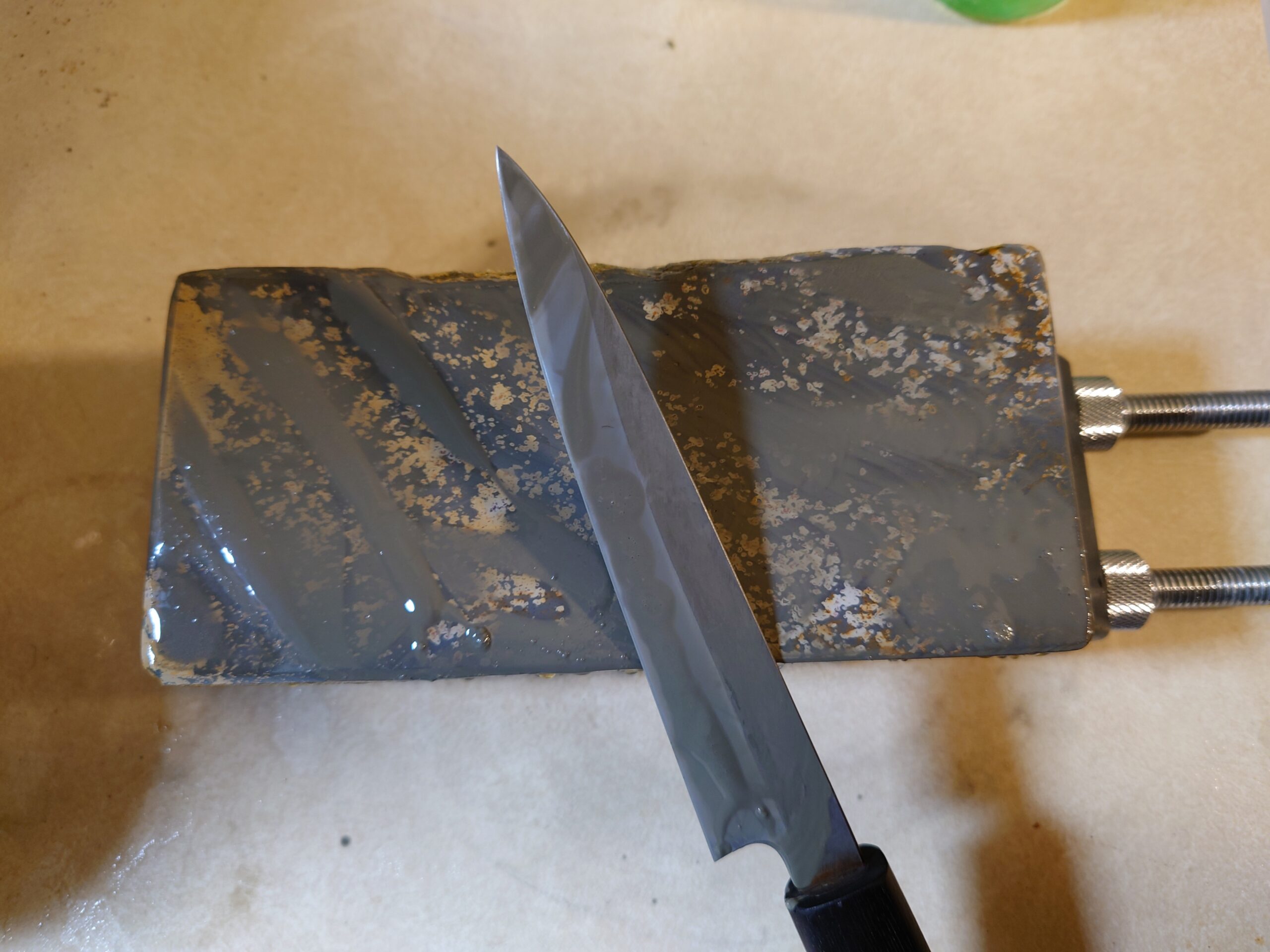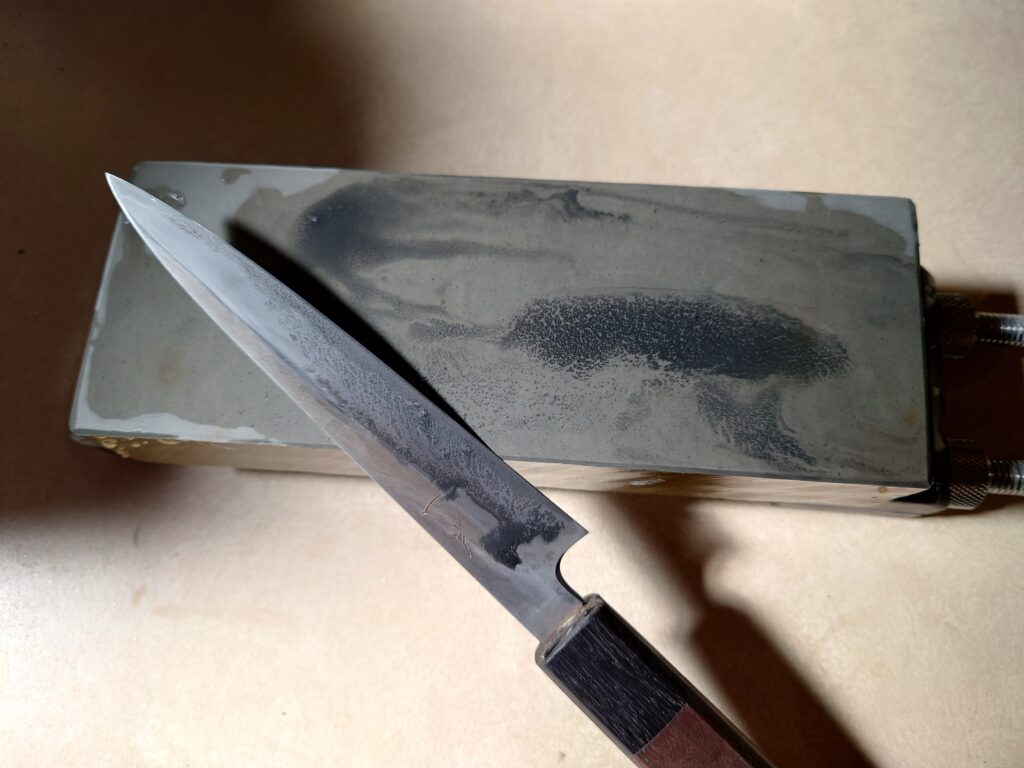Note: If you find any of these concepts about buying JNATs confusing, or you have never done so before, please read / re-read this page in full and return back.
Before Buying
- You do not want to go to a seller and ask them what stone you should buy without bringing any qualifiers to the table yourself.
- Consider which level of stone you really want, Aratoishi (coarse), Nakatoishi (medium), or Awasedo (fine/finishing). If you do not know, you are not ready to buy.
- Determine a clear understanding of what the stone is going to be used for. If you do not know, you are not ready to buy. While a stone may be usable for many applications, often it is going to be best for a specific one, so identify if the stone is meant as a tool sharpening, knife sharpening, knife polishing, razor honing stone, etc. first. Basic rundown is as follows:
- Tool Sharpening – Middle level Nakatoishi
- Knife Sharpening (Reshaping/Chip Removal) – Aratoishi or Coarser level Nakatoishi
- Knife Sharpening (Early Refinement) – Middle/High level Nakatoishi and/or Low level Awasedo
- Knife Sharpening (Finishing) – Middle/High level Awasedo, 3.5-5/5 range depending on if you like softer/harder stones.
- Knife Polishing (Flattening/Shaping) – Aratoishi
- Knife Polishing (Scratch Refinement) – Nakatoishi)
- Knife Polishing (Scratch Removal) – Low/Middle level Awasedo or Uchigumori, 2.5-4.5/5 range depending on the finish you are looking for.
- Razor Honing (Bevel Setting) – Middle/High level Nakatoishi, purity is very important for this application.
- Razor Honing (Finishing) – High level Awasedo, 4-5+/5 range depending on preference of edge feel and workability.
- The softer the stone for the application, the generally easier it is to use, but less performance it will bring. Polishing a knife on a 2.5 stone is very easy, but you need to use a 4.5 to get a near-mirror finish. Razor honing on a 4.5 is easier, but 5+ stones will most likely give the keenest edges. Etc.
- It is incredibly likely that you lack the experience, even if you have a background in synthetics (though that helps) to get a stone you will find is the perfect stone for you on your first shot. Often, what you like such as hardness/fineness/feel of the stone isn’t possible to know until you’ve tried a few.
- Regarding the above point, your first stone is likely to lead to a second/third/etc. as you identify what you like and wish to move onto other stones that may be perfect for your application. Keep your first stones cheap, err on the side of more versatility (so likely softer but within range for your specific application) and shop around, contact me and I will be happy to talk with you, or ask in a community for further assistance.
Buying JNATs Most Important Factors
- The seller lists a hardness/fineness rating or preferred are separate hardness and fineness ratings. If you cannot get this information for the specific stone you are purchasing, you have no idea what you are really going to get.
- The seller should provide pictures of the exact stone you are going to buy. If you are unsure if the listing is for one specific stone, ask. It is good to get a picture both dry and wet of the surface as it can help you understand the stone better.
- The seller should communicate with you readily and provide answers to questions as needed. Obviously, it is also important to respect the seller’s time, however it should be expected for these items they are willing to help you ascertain the qualities of the stone before purchasing it.
- The seller should be able to provide the weight (in grams) and dimensions (in mm) of the stone.
- The seller should be able to answer clearly whether the stone has any toxic inclusions or not.
Buying JNATs Important Factors
- It is preferred if the seller can provide a picture showing how fast the stone muds up when being used for polishing. Even if you are not polishing, this will give you a great idea of how muddy the stone is before you purchase it. Below is an example of a muddy stone and a hard stone, you can see the differences in how they produce swarf.
- It is preferred if the seller can provide a picture of the Kasumi polish on a knife after polishing on the stone. This also helps you understand the characteristics of the stone based on how it leaves the finish and what it will be able to provide you with when being used for either sharpening or polishing.
- It is preferred if the seller can provide the strata of the stone. This is particularly important if you are a razor user, as if the stone is a Suita stone it may not be great for a nagura progression.
Buying JNATS Secondary Factors
- It is nice when the seller can provide a mine or origin.
- It is nice when the seller can provide names for the visual characteristics of the stone.
- It is nice when the seller can seal the stone for you.
Reputable Sellers
Anyone on the Reputable Japanese Natural Stones (JNATS) & Nagura Sellers list generally qualifies as having the “Most Important” and “Important” factors.




